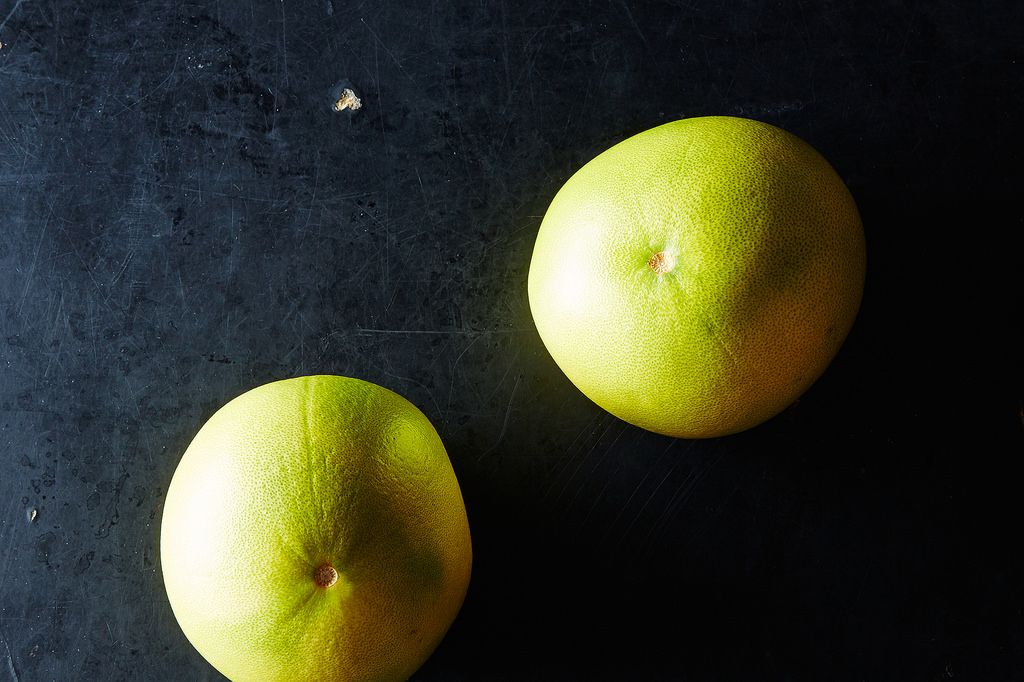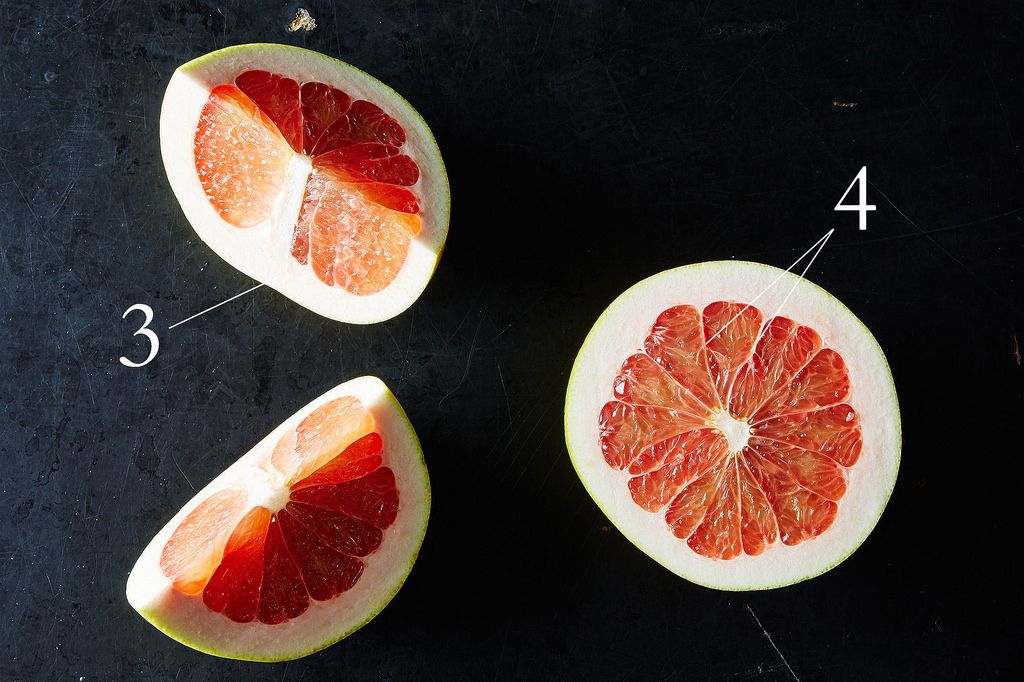
Pomelo’s botanical names -- Citrus maxima and Citrus grandis -- don’t leave much to the
imagination: This is a big fruit. The largest citrus fruit, in fact. How big are they? They’re so big that pomelo hats are actually a thing, and in more reasonable size-comparison terms, you’ll find them ranging from extra-large grapefruit up to almost basketball-sized. Scroll down for a visual: This pomelo (1, below) is fairly modest in size and it's sitting next to a large orange (2, below).
The pomelo is one of the few non-hybrid citrus fruits. It's one of the parent fruits of grapefruit (the other is sweet orange), so you might guess that pomelos are tart. But pomelos actually don’t have any of the bitterness of grapefruit: They are quite sweet and very fragrant.
If you can’t find them at your grocery store (they might also be labeled as pummelo or shaddock), try an Asian market. They can be round or more pear-shaped, wear a green or yellow peel, and have a wide range of colored flesh -- from whites and yellows through pinks and reds.

Dig your fingers into a pomelo to peel the fruit, and you’ll discover it has a thick layer of pith, more properly called the albedo (3, below) -- so thick, that peeling it away almost feels like ripping into a kitchen sponge. That thick peel means pomelos can hang out on on your counter, but it's still probably best to store them in the refrigerator. In all likelihood, they've traveled a fair distance to reach you, and asElizabeth Schneider points out: “Since it’s difficult to tell how long the pummelo has been on the road, I’d suggest using it fairly promptly.”
It’s not just the peel and pith you’ll want to get rid of: You’ll need to remove the thick, bitter membranes (4, below) between the segments, too. If segmenting citrus fruit the traditional way seems intimidating, try a new way to do it -- neither are as onerous as it seems. And since pomelos aren’t as juicy as other citrus fruits, you might not even need to use a knife to cut away the membranes -- you can just peel them away with your fingers.
More: If you want to save the peel for candying (and you should) take more care when peeling: Slice off the ends of the fruit, score the peel, and peel off the rind in large pieces.

Once you’ve freed your segments, it's time to actually enjoy your pomelo. Here are a few ideas to get you started:
- Pair pomelos with seafood, like swordfish or shrimp.
- Tuck the segments into crêpes, as our friends at Frieda’s do.
- Make marmalade.
- Use the segments in a salad, and not just fruit salads -- green ones too.
- Drier pulp means you can often easily separate the individual juice vesicles for sprinkling over dishes, just as you can with finger limes.
- Juice them for your morning pick-me-up (or your 5 o'clock one).
- Use their juice in a citrus vinaigrette.
- Skip the segmenting -- slice your pomelo in half horizontally, grab a grapefruit spoon, and dig in.





Комментариев нет:
Отправить комментарий